Engineered 3D quartz refers to a new generation of quartz slabs that use advanced printing and fabrication techniques to create three-dimensional, through-body patterns. Unlike traditional quartz slabs (which have a pattern only on the surface), 3D quartz slabs feature veins and textures that extend through the entire thickness of the material. For example, a recent industry first is the “through-body” quartz slab: the veins you see on top continue through the 30 mm slab. This means the design remains uninterrupted even on edges or waterfall installations. The result is a more natural, layered look – veins appear organic and lifelike, much like real.
This 3D effect is achieved using two main innovations. First, high-resolution digital printing (often called nano-ink printing) embeds detailed patterns into the surface and slightly below it. Such ink-jet printing can inject color ink ~1 mm deep, producing vivid, multi-color veining and even photorealistic images. Second, manufacturers may use layer-by-layer fabrication (3D printing) to build the slab’s core with the pattern already inside. One quartz maker explains that 3D printing builds quartz slabs one layer at a time from quartz powder, resin, and colorants, unlocking complex textures and embossed effects. As a result, modern 3D-printed quartz can mimic exotic marbles like Calacatta or even custom art, with the veins flowing seamlessly through the stone.
These innovations also bring practical benefits. A quartz slab with a through-body design does not need mitered edges or special matching – the pattern remains consistent on all cut surfaces. And some new products boast virtually zero crystalline silica (silica-free), making them safer alternatives. In short, 3D quartz combines high-tech printing with full-depth patterning to offer novel designs and durability not possible with older methods
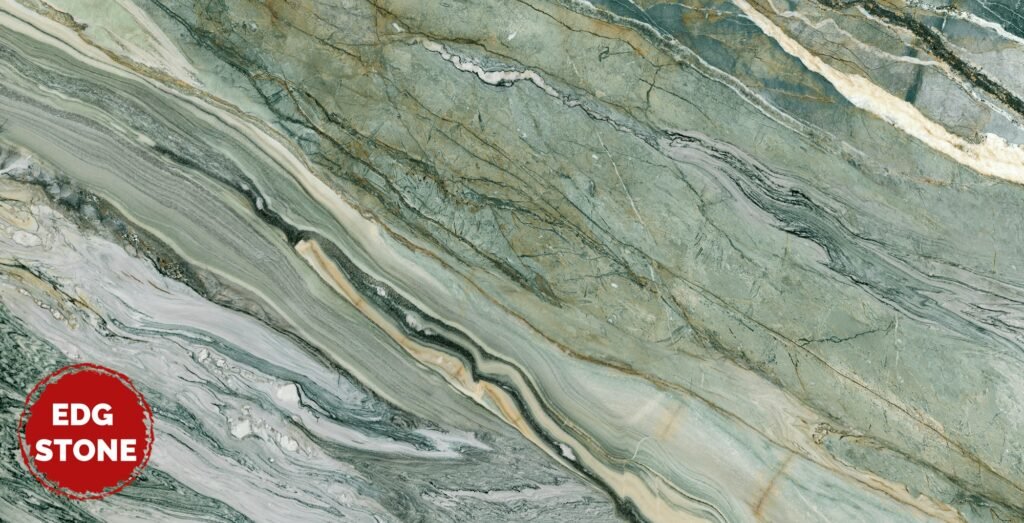
EDG Stones Launches 3D Through-Body Quartz
Table of Contents
Toggle- EDG Stones Launches 3D Through-Body Quartz
- 3D Ink-Printed Quartz
- Taj-Mahal 3D-Printed Quartz Slab Premium Full-Body
- 3D Ink Print Quartz Slabs from China
- Mystery Gold 3D Printed Quartz Countertop, Island, and Slab
- 3D Ink-Printed Quartz Slab – Unique for Countertops
- 3D Quartz Taj Mahal: A Symbol of Eternal Beauty and Love
- Frequently Asked Questions
- Conclusion
Leading stone suppliers are already rolling out these 3D quartz collections. For example, in late 2024, UltraStones announced an “industry-first 3D through-body quartz collection,” showcasing large slabs with veins that run completely through the 30 mm thickness. This launch highlights a trend: major brands, such as EDG Stones (a prominent engineered stone distributor), are embracing full-body quartz. Such products often come in jumbo and super-jumbo slab sizes (e.g., up to 126″ × 79″ or larger), enabling seamless spans on islands or waterfall edges.
These through-body quartz slabs (sometimes called full-body quartz) offer high durability. For instance, one supplier notes that their new quartz is “scratch- and stain-resistant” and completely non-porous, because it’s 93% quartz bound by resin. This makes maintenance easy: unlike natural stone, no sealing is ever needed. At the same time, the continuous veining means that countertops, backsplashes, or table edges all flow with the same pattern. In summary, EDG/UltraStones’ 3D through-body quartz is all about marrying large-format practicality with the look and feel of real marble or quartzite, as witnessed in their Calacatta Ruggetta and other luxury patterns.
Key benefits of 3D through-body quartz:
Pattern continuity: Veins and colors run through the full slab thickness.
Edge/miter simplification: No need for mitering, since the pattern matches on all faces.
Durability: Engineered quartz is inherently hard (often 93% natural quartz) and resists scratches, stains, and heat very well.
Seamless large spans: Available in jumbo sizes (e.g. ~3200×1600 mm and above)
3D Ink-Printed Quartz
A related innovation is 3D ink printing on quartz. In this process, an industrial inkjet printer applies the design onto the polished quartz surface with UV-curable inks. Unlike basic digital prints, the latest nano-ink technology injects color several layers deep into the slab. Avant Quartz, a pioneer in this field, describes how their nano-ink can penetrate up to 1 mm deep, embedding each pattern with full color fidelity. The result is a “captivating 3D effect” where veins have depth and shading that mimic the dimension of natural stone.
Such printed quartz slabs can replicate almost any design. According to industry sources, multi-color inkjet printing allows manufacturers to mimic rare marbles (like Calacatta marble) with “unmatched realism,” and even to print custom logos or photos if desired. In practice, one advantage list explains that advanced printing enables “unmatched realism: any design, pattern or style can be replicated,” along with “unlimited customization” such as photorealistic images. This means you could have a countertop with a 3D image or intricate motif right on the surface – something impossible before.
3D ink-printed quartz slabs are also offered by many Chinese manufacturers. Grand Quartz Tech (Thailand/China) advertises its use of “latest 3D printed technology” to produce a variety of quartz designs, giving customers premium, tailor-made options. Apex Quartz (China) similarly notes that 3D printing breaks previous limits of slab design, allowing layers of color and detail to be integrated directly into the composite. In short, 3D ink-printed quartz combines the strengths of engineered stone (durability, stain resistance) with the flexibility of digital printing, resulting in unique quartz countertops that look more dynamic and textured than ever
Taj-Mahal 3D-Printed Quartz Slab Premium Full-Body
One standout example of the 3D quartz trend is the Taj Mahal series of slabs. Inspired by the famous Taj Mahal quartzite (a luxurious Indian-stone look), these quartz slabs mimic the creamy-white base and delicate gold veins of the Taj Mahal marble. In natural stone, Taj Mahal quartzite is prized for its soft ivory background and subtle golden veining. Manufacturers now offer Taj Mahal 3D-printed quartz that replicates this look. For instance, LX Hausys’s Viatera brand introduced “Taj Duna,” a full-body quartz with Thru Vein™ technology so that the vein pattern continues through the entire slab, just like the original quartzite.
These premium Taj-Mahal quartz slabs are printed in ultra-high-definition (even 8K HD) and often come in super-jumbo sizes (e.g., 3.3 m × 2.0 m) to cover large areas without seams. They are usually finished with a polished, glossy surface that highlights the warm gold tones. Because the design is through-body, installers can edge or miter them without worrying about mismatched edges.
Taj-Mahal quartz designs are often marketed with the theme of “eternal beauty and love,” echoing the legend of the Taj Mahal monument itself. While the quartz is engineered, its pattern “echoes the timeless allure of marble”, lending an elegant, romantic vibe to kitchens or bathrooms. In summary, 3D-printed Taj Mahal quartz slabs offer the exquisite, heartwarming aesthetic of Taj Mahal marble combined with modern durability.
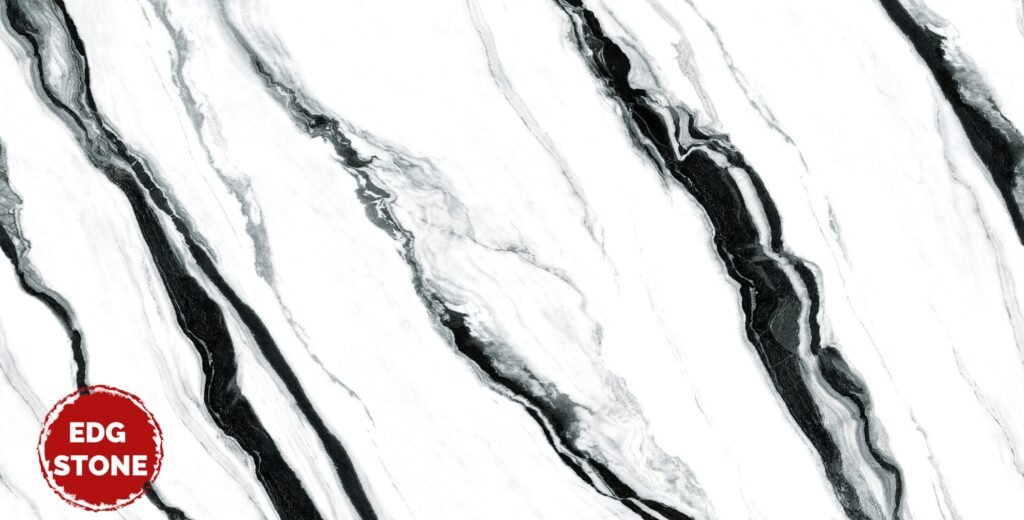
3D Ink Print Quartz Slabs from China
China is now a major hub for 3D-printed quartz technology. Numerous Chinese factories (and their sales on platforms like Alibaba) promote thousands of “ink print quartz slabs” in various patterns. For example, some Chinese suppliers offer printed quartz slabs sized up to 3200×1600 mm (standard jumbo size) or even larger. Grand Quartz Tech’s website explicitly states they have a line dedicated to super-jumbo quartz slabs (up to 138″×78″ or 3500×2000 mm) using 3D printing technology. Similarly, Indonesian company iStone mentions that their “Super Jumbo” quartz slabs reach about 78″×138″ (2000×3500 mm).
These large slabs allow fabricators to create expansive countertop or wall cladding pieces with very few seams. According to Work-tops.com, slab sizes commonly range from roughly 2270×1540 mm up to super-jumbo 3300×1630 mm. Thickness options typically include 12 mm (for wall panels), 20 mm, 30 mm (the most popular for countertops), and even 40 mm for heavy traditional looks. Chinese suppliers also sell thinner 12 mm quartz for backsplashes and walls.
In terms of volume, Chinese factories can load a 20-foot container with on the order of 40–50 slabs of 3 cm quartz (depending on weight limits). For instance, one stone trader notes that 6–7 bundles (about 38–42 slabs of 3 cm quartz) fit in a standard container under normal weight limits. This scale of production means buyers can source printed quartz, including 3D and full-body designs (e.g., Taj Mahal, Calacatta, Mystery Gold, Magnifique, and others), at competitive prices directly from China. Overall, Chinese-manufactured 3D ink-printed quartz slabs provide a vast “premium choice” of styles at factory prices.
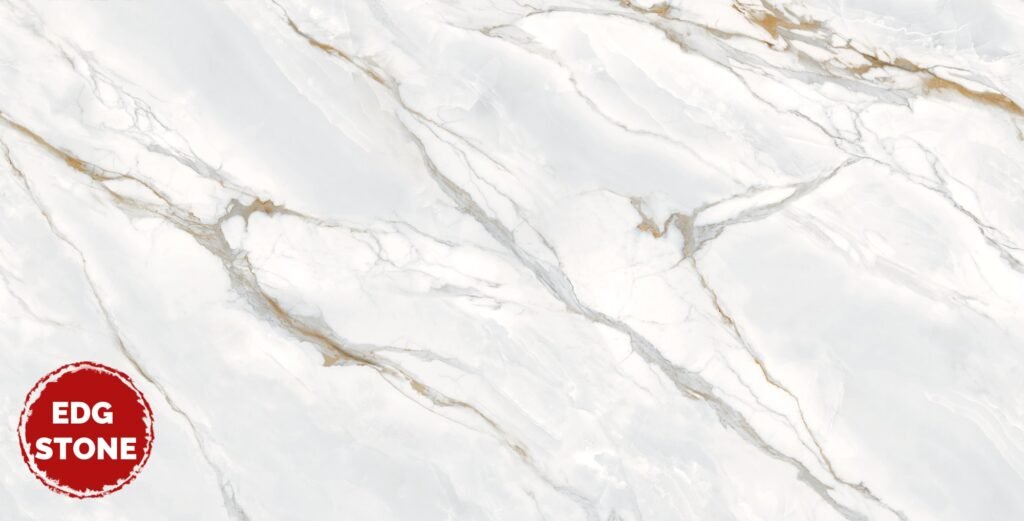
Mystery Gold 3D Printed Quartz Countertop, Island, and Slab
“Mystery Gold” is an example of a 3D-printed quartz design popular in the US market. This particular pattern typically features a white or light background with speckles or veins of gold and gray, evoking a high-end marble effect. It is available as a 20 mm thick polished slab (with a laminated 40 mm edge, often used for islands and tables). U.S. suppliers like Granite Factory Direct advertise Mystery Gold quartz in large slabs (e.g., 126″×63″) and smaller prefabricated cuts, indicating its use for both countertops and standalone islands.
Although detailed info on Mystery Gold’s exact composition isn’t public, it follows the same principles as other 3D quartz: the pattern is applied via digital printing so that the gold flecks appear embedded in the stone. Customers like it for its warm, luxurious look and because its engineered nature means it won’t fade or stain. Mystery Gold and similar branded 3D quartz slabs are typically sold by domestic distributors and fabricators, often at premium prices due to their unique design. (For context, most quartz ranges about $50–$200 per sq. ft, so a feature slab like Mystery Gold may be on the higher end.)
3D Ink-Printed Quartz Slab – Unique for Countertops
The “unique” aspect of ink-printed quartz slabs is that each pattern can be highly customized. As one quartz maker notes, designers can “request personalized patterns, logos, or even photorealistic images” on the slab. For countertops, this means a homeowner could have virtually any image printed – from a marble look like Calacatta Alpi to abstract art or wood grain – without damaging the surface integrity. In practice, many 3D-printed quartz slabs feature striking veined designs (similar to bookmatched marble) or bold geometric patterns. For example, an Alibaba listing shows a “Stella” quartz slab measuring 3200×1600 mm with a custom abstract print designed for countertops.
Because the printed color is cured into the resin surface, finishes remain scratch- and heat-resistant just like regular quartz. Yet the appearance can be far more varied. Bullet-point benefits of 3D ink printing include:
Unlimited design range: Any color, pattern, or complex graphic can be applied.
High realism: Natural stone textures (marble, agate, concrete, etc.) are mimicked with photographic clarity.
Durability: The quartz resin matrix ensures the printed design is permanent, non-fading, and easy to clean (no joints or grout in the design).
Differentiation: Countertops can truly stand out, or blend in seamlessly with modern/3D décor.
In short, 3D-ink quartz slabs marketed as “unique for countertops” leverage digital printing to turn any design idea into a real quartz slab. The end user simply enjoys the look of an artful, rich pattern on a tough, stain-proof surface.
3D Quartz Taj Mahal: A Symbol of Eternal Beauty and Love
The Taj Mahal monument is famous as a symbol of enduring love, and Taj-inspired quartz taps into that romance. A 3D quartz design named “Taj Mahal” or “Taj White” typically features a milky white base with faint gold or gray veining – reminiscent of the iconic marble mausoleum. As one quartz product description says, its “exceptional beauty” comes from a soft creamy-white background with subtle gold veining, giving a luxurious, bright appearance.
In this context, a 3D Quartz Taj Mahal slab becomes more than a countertop: it’s a design statement. One marketing angle calls it “a symbol of eternal beauty and love,” playing off the history of the actual Taj Mahal. Though we found no direct article on the symbolism, the name itself conveys that meaning. The engineering ensures the white remains non-yellowing and the pattern is full-depth. So a kitchen island clad in Taj Mahal 3D quartz is a subtle tribute to that story of devotion, while being practical and easy to care for.
For builders or designers, these Taj Mahal quartz slabs are essentially the engineered equivalent of a very expensive marble, without the porosity or variability. Viatera’s Taj Duna quartz — which achieves full-body veins for seamless edges — was created “inspired by the exquisiteness of natural marble”. Thus, the product name and the motif both tie back to the theme of the famed monument and its tribute to love and elegance.
Frequently Asked Questions
How much is quartz per sqft? Prices vary by quality and brand. In general, engineered quartz slab material runs about $50–$200 per square foot. Most homeowners find common grades fall between $70 and $100 per sq. ft. The final installed cost can be $50–$150+/sq ft after fabrication and installation. The cheapest quartz (builder grade) is around $40–$60, while high-end designer slabs can top $150–$200 per sq ft.
What is 3D quartz? 3D quartz refers to engineered quartz slabs with three-dimensional printed designs or patterns that extend through the slab. Unlike traditional quartz (pattern on only the face), 3D quartz uses digital printing and layer techniques to make veins and textures appear more organic and run through the entire thickness. The result is a marble-like effect with continuous veining on all surfaces.
How to get cheap quartz countertops? To save money, choose a less premium quartz grade (often called second choice or builder’s grade, ~$50–$60/sq ft). You can also opt for thinner slabs (20 mm instead of 30 mm) or smaller slab sizes (fewer waste cuts). Buying remnants or offcuts, or going through wholesalers or importers (sometimes from China), can cut costs. Avoid exotic patterns or full-body printing if price is the biggest concern. (For reference, quartz generally costs more than granite; its investment can be seen in its uniform look and low maintenance.)
How many sq ft is a slab of quartz? A standard quartz slab (around 3000×1400 mm or 120×55 inches) is roughly 45–50 square feet. Jumbo slabs (e.g., 3200×1600 mm, about 126×63 inches) yield closer to 55–60 square feet. For example, Work-tops.com lists a 3000×1400 mm slab (≈45 sq ft) and a 3200×1600 mm slab (≈55 sq ft) as common sizes.
What sizes do quartz slabs come in? Quartz slabs range from medium to super-jumbo. Common dimensions include ~2270×1540 mm up to 3000×1400 mm. Large (jumbo) slabs around 3200×1550 mm or 3200×1600 mm are widely used. Some manufacturers even produce “super jumbo” slabs ~3300×1630 mm or bigger. Thickness is typically 12 mm (0.47″) for thin panels, 20 mm (¾″) and 30 mm (1¼″) for countertops, and occasionally 40 mm. Work-tops.com notes that slabs are offered in 12, 20, 30, and 40 mm thicknesses.
How many quartz slabs are in one container? For import shipping, a 20-foot container can hold roughly 40–50 slabs of quartz (3 cm thick), depending on weight limits. One stone supplier explains that with a standard truck weight limit (~19,900 kg), you’d load 6–7 bundles, about 38–42 slabs of 3 cm material. If extra weight allowance is available at port (~27,000 kg), up to ~45–56 slabs can fit.
How do I calculate how many slabs of quartz I need? First, to measure the total countertop or surface area (length × width in feet). Then divide by the area of one slab. For example, a 120×55 in slab covers ~50 sq ft. So if you need 120 sq ft of countertop, you’d need about 2.5 slabs, so order 3 slabs to allow for cuts and waste (about 10% extra). Always consult your fabricator to account for the seaming layout. A tip from Angi: “Quartz is often sold in slabs around 120×55 inches”, so use ~50 sq ft per slab when estimating.
Who makes super jumbo quartz slabs? Several manufacturers specialize in super-jumbo sizes (far above the usual 63×126″). Notable ones include Grand Quartz Tech (Thailand/China) and iStone (Indonesia), which produce slabs up to 78″×138″ (2000×3500 mm). For instance, Grand Quartz lists a Super Jumbo line (138″×78″) made on a dedicated line, and iStone explicitly states “super jumbo quartz comes in size 78×138 inches”. In the US, specialty suppliers like FabQuartz and others also sell very large quartz slabs, often under the “Super Jumbo” category. These allow one-piece island tops or feature walls without seams.
How much do 70 square feet of quartz weigh? Quartz is heavy: a 3 cm (1¼″) thick slab weighs about 15–19 lbs per sq ft. So 70 sq ft of 3 cm quartz weighs roughly 1050–1330 lbs (about 480–600 kg). For a rough guide, the Petros Stone resource notes “Quartz at 3 cm thickness weighs around 15–19 lbs per sq ft”. (For comparison, 20 mm quartz is about 10–12 lbs/sq ft.) Always check with your installer for cabinet reinforcement, but typically 70 sq ft of quartz requires adequately braced support.
Is quartz better than granite? Both have strengths. Quartz countertops are fully non-porous, requiring no sealing and resisting stains and bacteria. They offer uniform patterns and an almost unlimited color palette (solid colors or even custom prints). On the other hand, granite is a natural stone with unique, one-of-a-kind veining and excellent heat resistance. Granite can take very hot pots without damage, while quartz (being resin-based) can discolor with excessive heat. Quartz is marginally harder and slightly heavier than granite, but granite edges can chip if impacted on a weakness. In summary, quartz tends to be easier to maintain (no seal, uniform look), whereas granite appeals to those wanting authentic natural stone and extreme heat toughness. Neither is objectively “better” – it depends on whether you prioritize maintenance and consistency (quartz) or natural variety and heat resilience (granite).
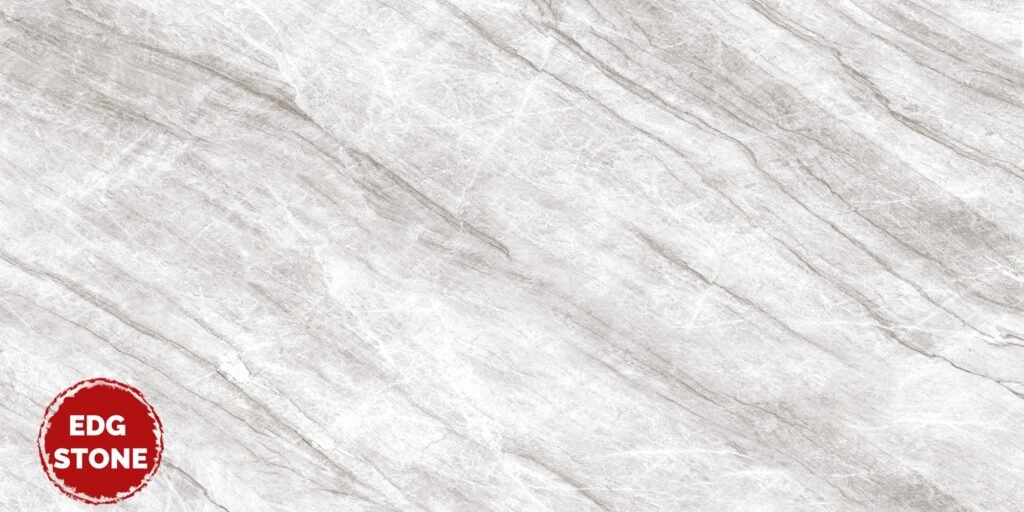
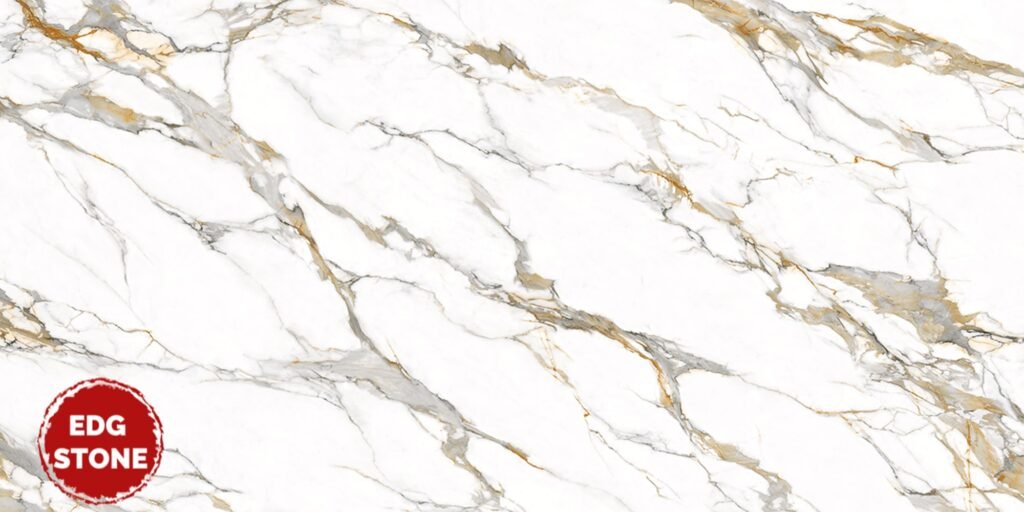
Conclusion
In essence, 3D quartz represents the cutting edge of engineered stone design. By printing intricate patterns throughout thick slabs and offering full-body color consistency, manufacturers have created quartz surfaces that rival the beauty of exotic marble (such as Calacatta or Taj Mahal quartzite) while retaining quartz’s durability. Brands like Calacatta Alpi, Magnifique, and Grand quartz illustrate the blend of artistry and engineering. The new 3D ink-printed slabs (e.g., Taj-Mahal, Mystery Gold) are premium full-body quartz designs symbolizing luxury and even love. As suppliers roll out these innovations (from EDG/UltraStones in the USA to Grand Quartz in Asia), customers gain unprecedented quartz slab sizes, thickness options (including thin 2D and thick 3D panels), and custom 3D patterns. With major U.S. distributors in Houston and San Diego carrying these materials, and with competitive pricing on imported slabs, 3D quartz is poised to become a mainstream option for countertops and surfaces.
Key takeaways: 3D quartz combines digital ink-jet printing and layer construction to give engineered quartz slabs true three-dimensional depth. Common thicknesses are 20 mm and 30 mm, and slabs are available in jumbo formats (up to ~330×163 cm). Designs like Calacatta Alpi, Calacatta Ruggetta, and Taj Mahal mimic natural stones with continuous veins. Whether for a luxury kitchen countertop or a show-stopping island, 3D quartz offers a blend of beauty, performance, and scale that bridges the gap between tradition and technology.
Tags: #3DQuartz #EngineeredStone #QuartzSlab #QuartzCountertops #QuartzSupplier #QuartzFactory #CalacattaQuartz #CalacattaAlpiQuartz #MagnifiqueQuartz #CalacattaRuggetta #GrandQuartz #SilicaFreeQuartz #Quartz3DPrinting #QuartzManufacturing #QuartzWholesale #QuartzPrice #QuartzSize #QuartzThickness #QuartzComparison #QuartzVsGranite #JumboQuartz #QuartzSlabPrice #QuartzCountertopSupplier #QuartzInlays #QuartzBevel #QuartzCounter #QuartzIsland #QuartzHomeDecor #QuartzDesign #QuartzInstallation #QuartzInspiration
